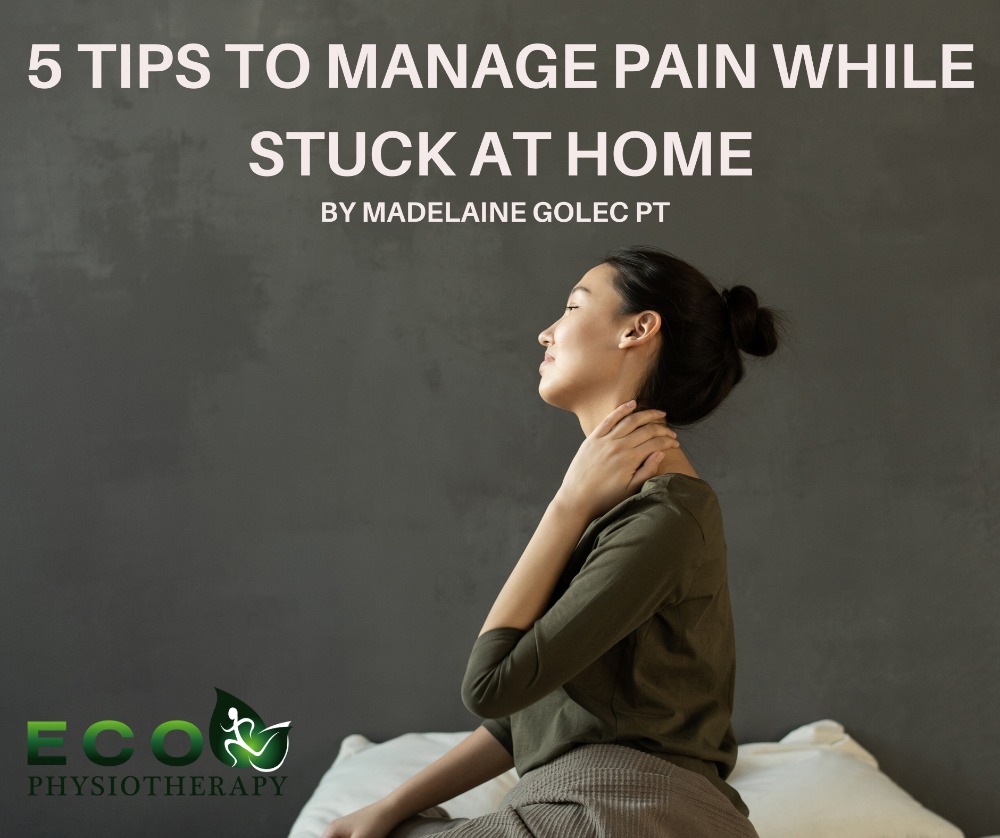
1.Getting some sunshine and Vitamin D
The spring weather feel is not quite here yet and we have been mostly stuck inside all winter, so it’s likely we may be lower on vitamin D. unless of course you have been supplementing. There have been several studies that have found a link with low vitamin D and persisting pain. So why not have that cup of tea or water outside and let the sun touch your face. Better yet, would be getting into a habit of taking a gentle walk outside.
2.Starting a Pacing Program to Move
Muscles can become painful and unhealthy when they are under-used. Muscles are at their best when they are moving and contracting.
When you are in pain and not used to movement, it is not suggested that you take on a movement strategy that is too intense. This can cause a flare-up and make you feel like you might have done something wrong. Flare-ups can occur not because you hurt yourself but because you may have done something your body is not used to.
Here is a great way to get moving without over doing it.
Day 1 Walk for 3 minutes
Day 2 Walk for 3 minutes and go up and down 2 steps.
Day 3 Walk for 4 minutes and do 4 steps
Day 4 Walk for 5 minutes and do 5 steps
Day 20 Walk for 20 minutes and do 20 steps
And continue till you reach at minimum 30 minutes but better 60 minutes
3.Breathe in More Oxygen
Seems silly to say but when was the last time you actually stopped to think about your breathing?
Oxygen is very important to our tissues and nerves. When they don’t get enough oxygen they will start to be irritated and hurt.
2 ways to get more oxygen are aerobic or cardio exercise or breathing exercises.
So if you start your walking program as listed above that is a great start. Supplement with a deep breathing exercise, where you breathe deeply using your diaphragm muscle or perhaps a 4X4 breathing technique.
Breathe in for 4 seconds, hold for 4 seconds, breathe out for 4 seconds, hold for 4 seconds and repeat. 5 minutes a day with your exercise program is a great way to start.
4.Sleep
Every have a really bad sleep and felt absolutely terrible the next day?
Maybe your sleep is okay and you’re getting 7-8 hours of sleep but is it actually an optimized sleep?
Many studies have shown a link between sleep and pain. So one thing you can do to manage your pain is put your efforts into creating good sleep habits and trying to get your best sleep between the hours of 10pm and 2 am. This is when the body is in its most optimal rest, digest and repair phase. So you if you sleeping from 3 am to 12pm, you may be missing out on the body’s natural system of healing.
Listen to this great podcast on better sleep habits here: https://www.ecophysio.com/ep-26-improving-your-sleep-hygiene/
5.Managing Stress
These are challenging and uncertain times, which means we are under more stress and worry. This can make pain feel even worse.
Do you have scheduled self care time? Not sure what you can do?
Here are some suggestions.
-Smile for 1 minute: even if you don’t feel like it. Do this 3-5 times a day
-Do something fun that you enjoy.
-watching a funny video or movie
-call a friend that makes you feel good
-meditation
-breathing exercises
-exercise
-Do something creative like drawing, colouring, painting, gardening, etc
-And if really struggling, talk to a professional
If you are still struggling with pain, schedule a call with a physiotherapist and we can evaluate whether an in person visit is appropriate. Book here
Reference.
The Pain Truth and Nothing but By Bahram Jam
